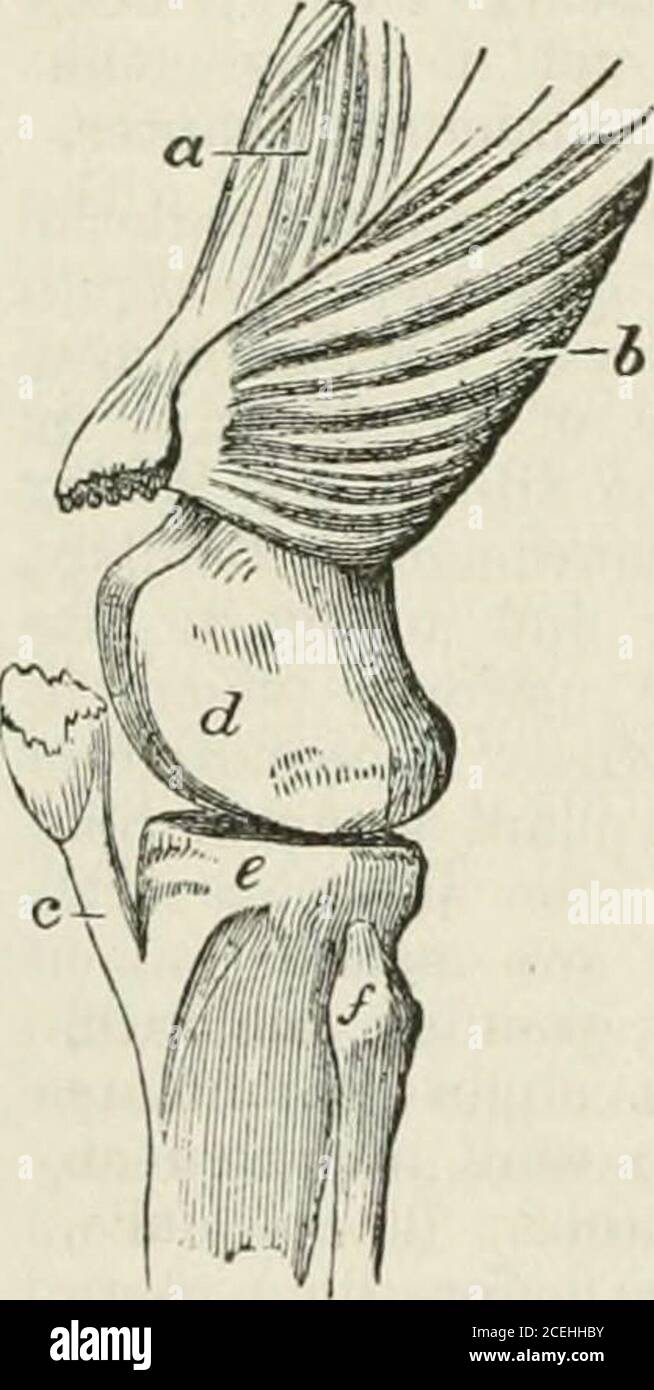. Chambers's encyclopedia; a dictionary of universal knowledge for the people. from the accom-femur; e, head of tibia; • .. ., . /, head of fibula. payi»g hgure, it IS very difficult to obtain bonyreunion of the parts, and the case generally resultseither in mere hgamentous union or in no trueunion at alL PATELLA and PATELLID^. See Limpet. PATEN (Lat. pafhia, a dish), the plateemployed for the elements of bread in the Eucha-ristic service. Anciently it was of considerablesize; and while the practice of the Offertory(q. V.) continued, there was a special paten for thebread-offering. In the Roma

Image details
Contributor:
Reading Room 2020 / Alamy Stock PhotoImage ID:
2CEHHBYFile size:
7.2 MB (231.1 KB Compressed download)Releases:
Model - no | Property - noDo I need a release?Dimensions:
1122 x 2228 px | 19 x 37.7 cm | 7.5 x 14.9 inches | 150dpiMore information:
This image is a public domain image, which means either that copyright has expired in the image or the copyright holder has waived their copyright. Alamy charges you a fee for access to the high resolution copy of the image.
This image could have imperfections as it’s either historical or reportage.
. Chambers's encyclopedia; a dictionary of universal knowledge for the people. from the accom-femur; e, head of tibia; • .. ., . /, head of fibula. payi»g hgure, it IS very difficult to obtain bonyreunion of the parts, and the case generally resultseither in mere hgamentous union or in no trueunion at alL PATELLA and PATELLID^. See Limpet. PATEN (Lat. pafhia, a dish), the plateemployed for the elements of bread in the Eucha-ristic service. Anciently it was of considerablesize; and while the practice of the Offertory(q. V.) continued, there was a special paten for thebread-offering. In the Roman Catholic Church, inwhich the unleavened wafer-bread is used, and thecommunion is distributed from a distinct vesselcalled Pyx (q.v.), the paten is a small circular plate, always of tlie same material with the chalice. Itis often richly chased or carved, and studded withprecious stones. It is used only in the mass. PATENT is an exclusive right granted by the gov-ernment (in letters patent or ojien, whence the name)to an individual to manufacture and sell a chattel or320. Pig. 2. a, rectus muscle; 6, vastus extenius muscle ; c, liga article of commerce of his own invention. The presentlaw allows the inventor to have a monopoly of his in-vention for seventeen years, without a further privilegeat the end of that time. The evils of the present laware that there is a great deal of uncertainty in the modeof ascertaining what is a new invention. Hence, whena patent has been granted, if it is of such a nature asto lead to competition, infringements are almost mat-ters of course, and the only mode of discovering andchecking the infringement is so tedious, costly, andineffective, that inventors generally pass then* lives inconstant litigation, fighting nn detail a succession ofimitators who often have nothing to lose bv defeat, and therefore entail all the greater burden on the legit-imate manufacturer. It has been said that not morethan three patents per cent, are remunerative. All th